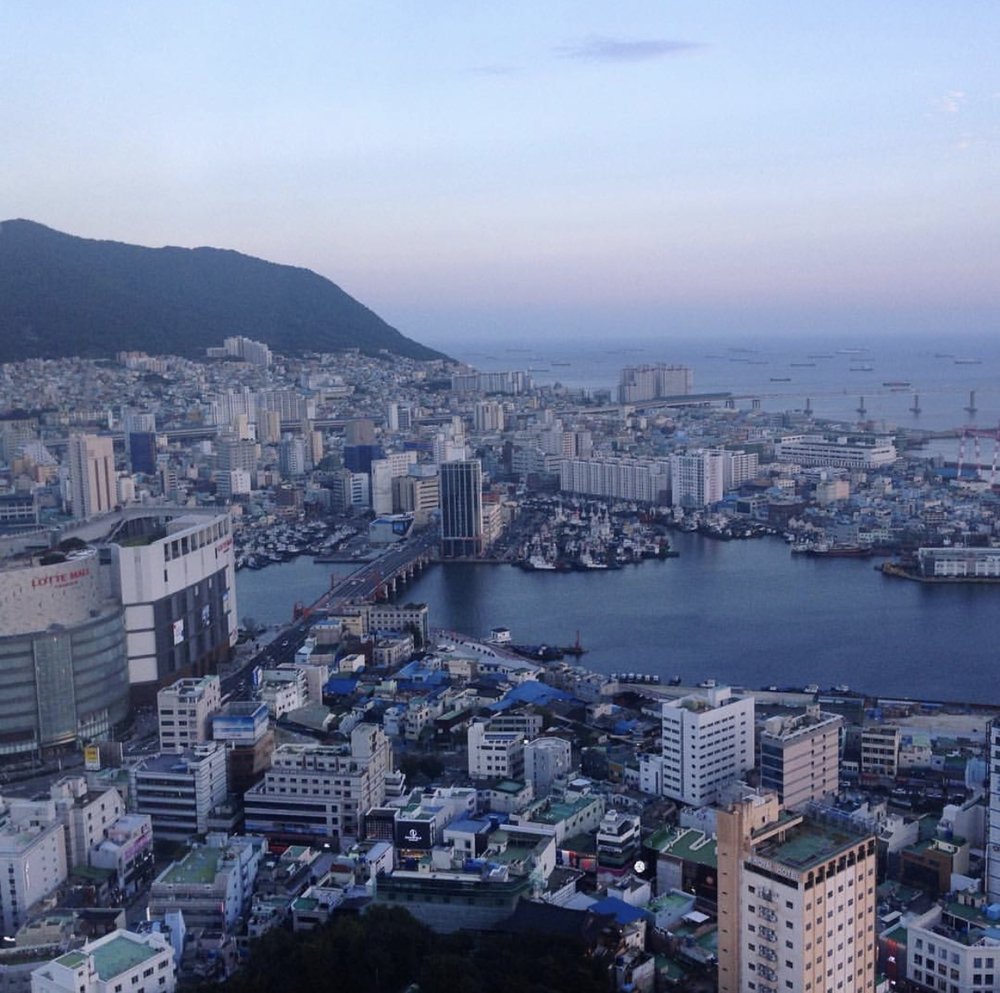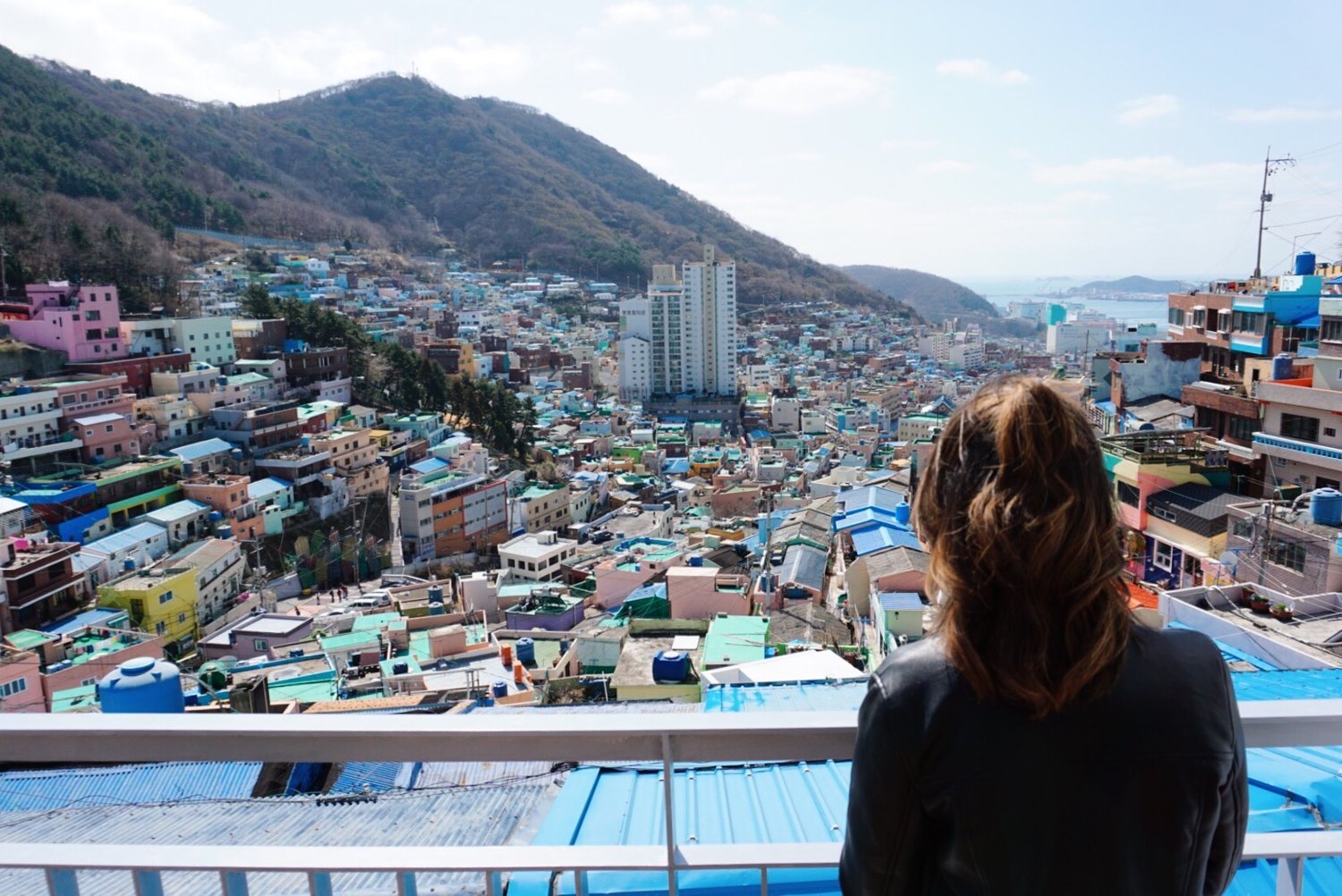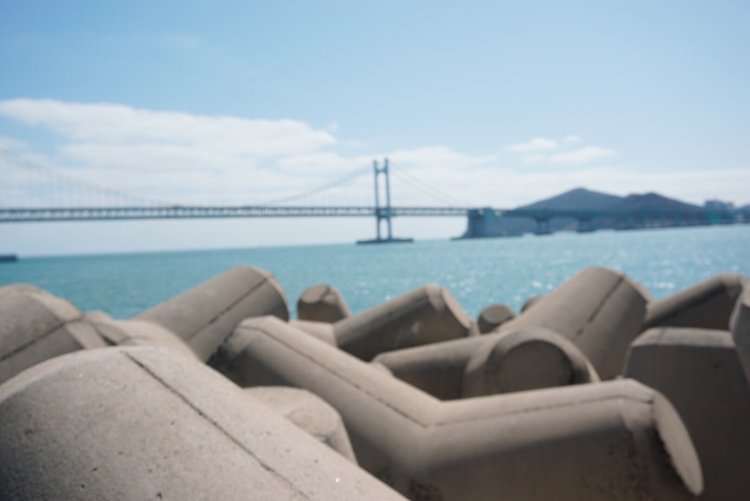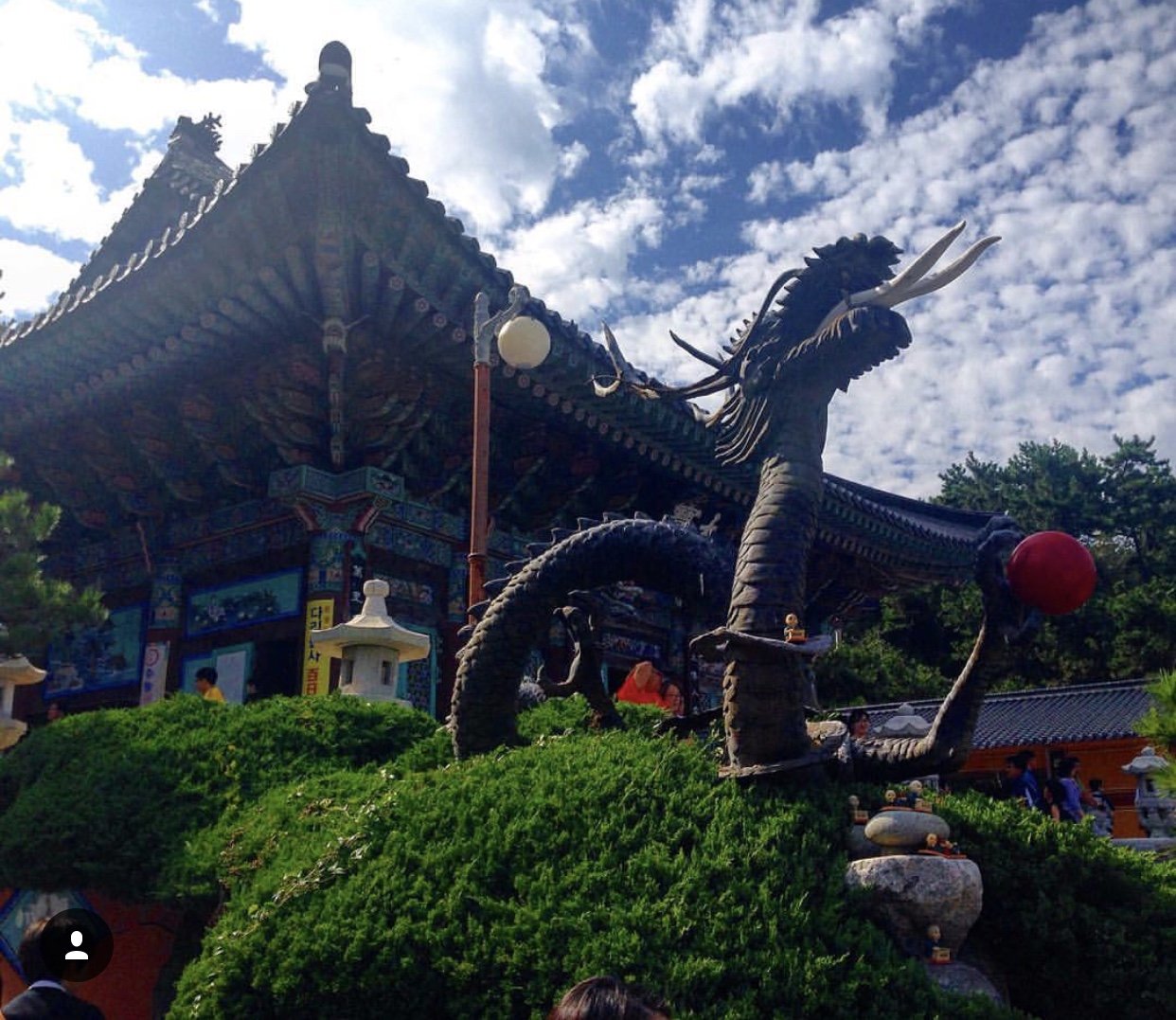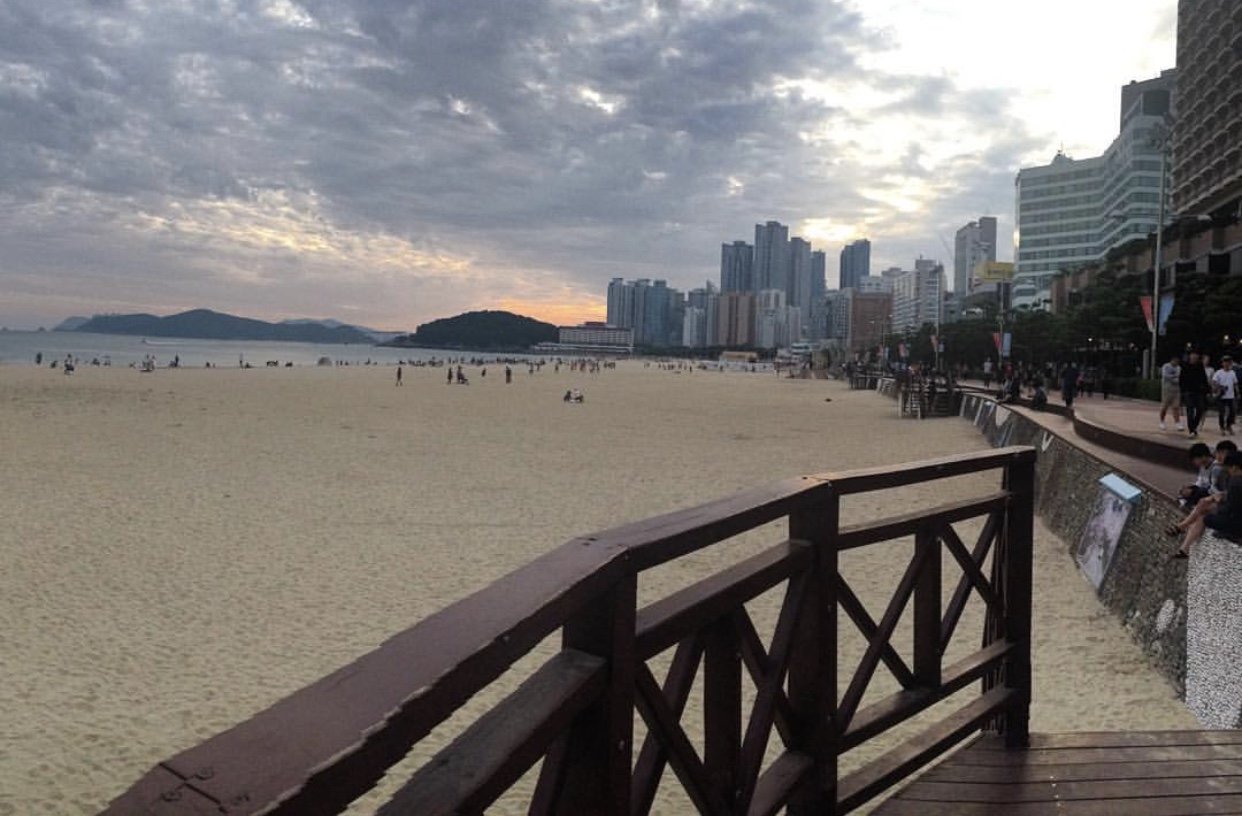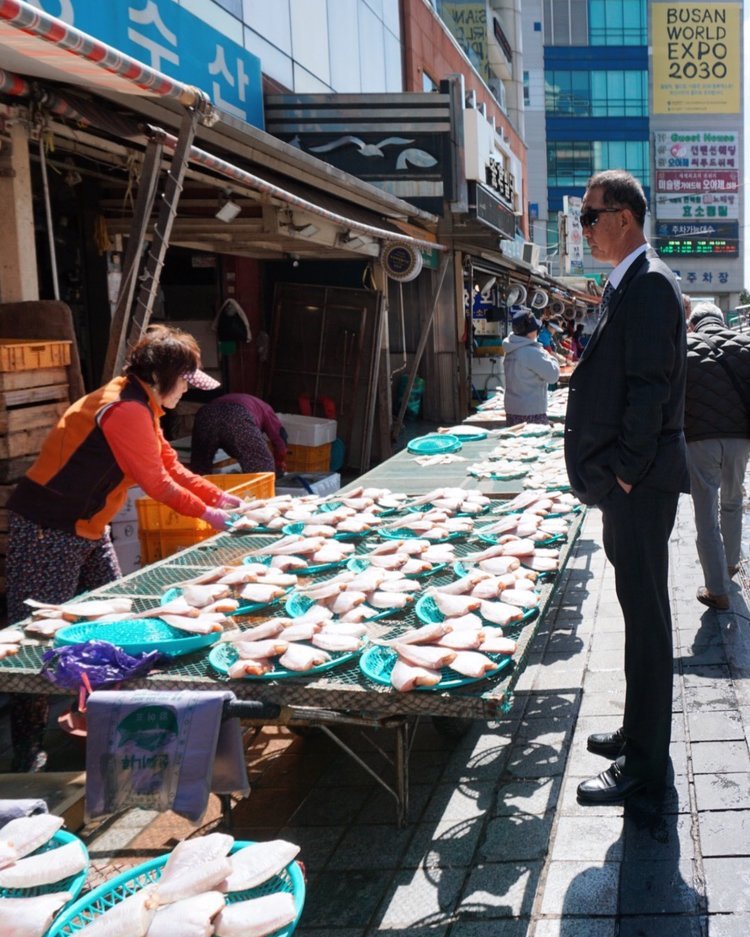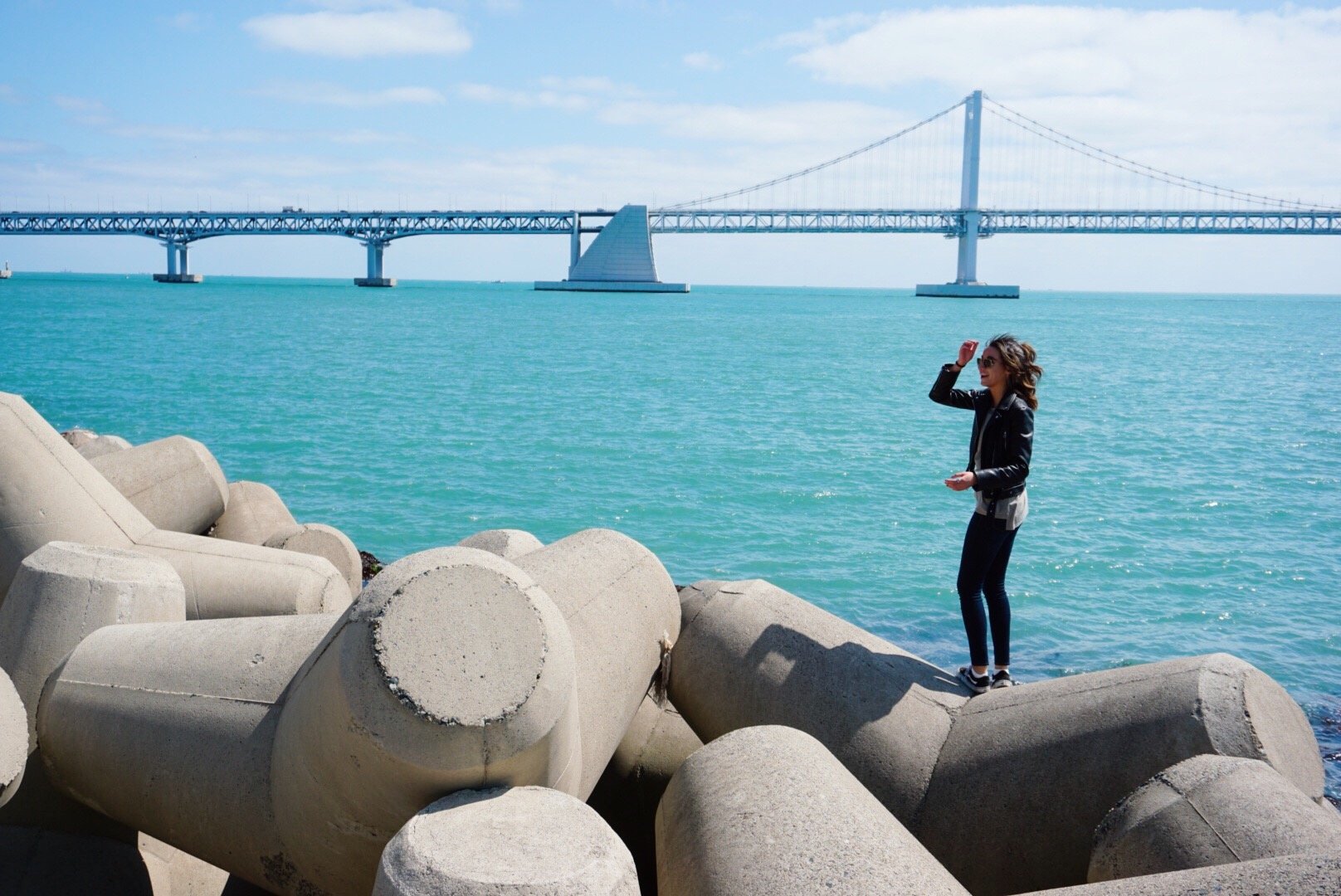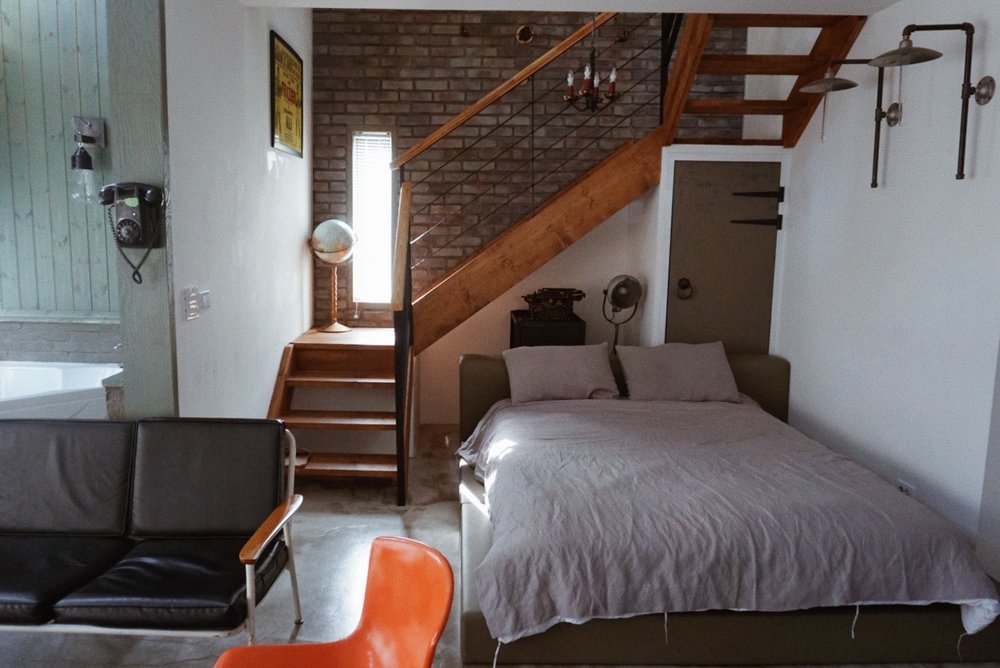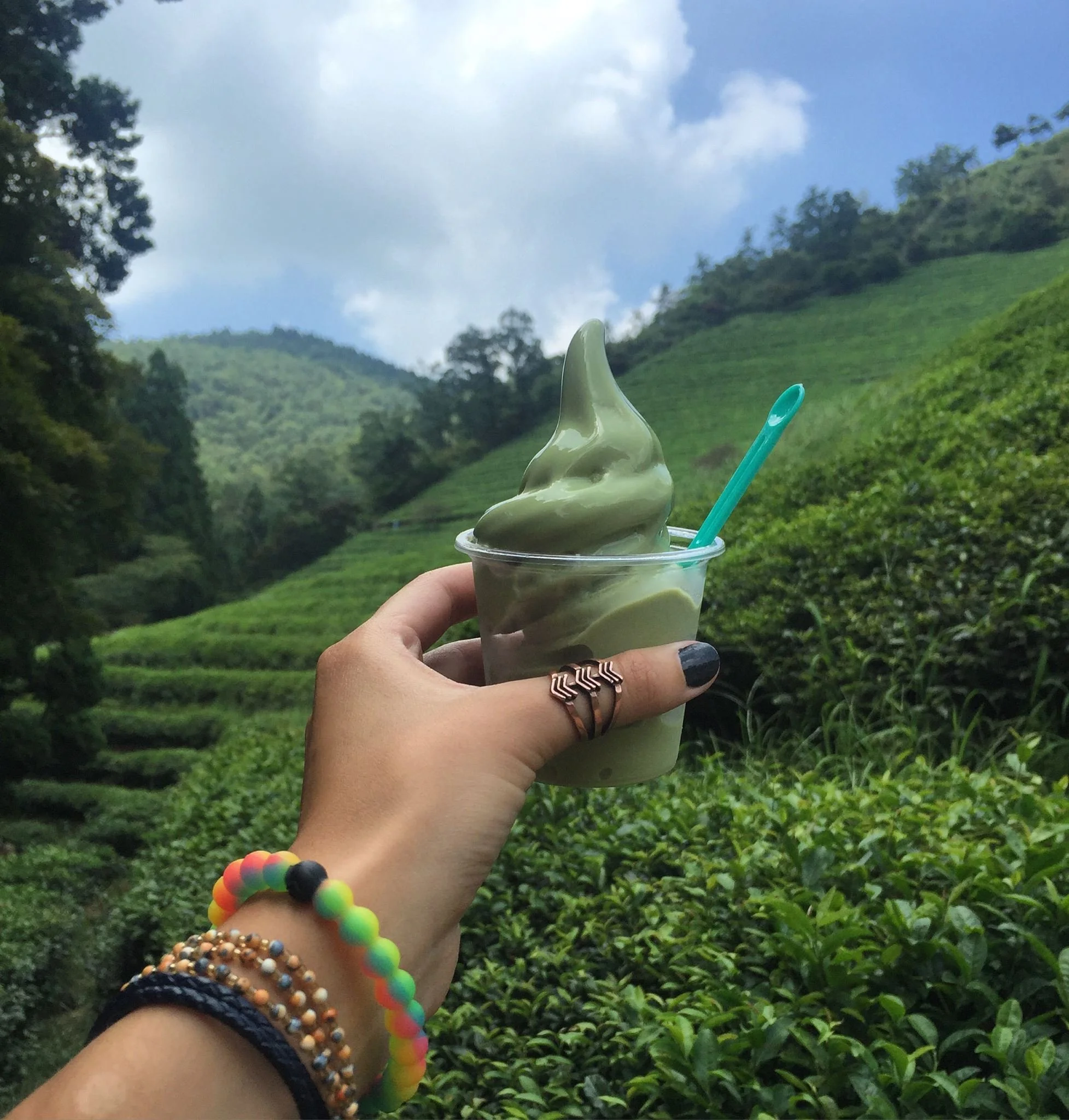7 Things to do in Busan, South Korea
Originally posted April 11, 2018
Korea's second-largest city, situated on the country's southeastern coast, is a beautiful and vibrant metropolis... and, like most other Korea-related things, it is highly underrated.
From picturesque beaches and traditional temples, to bustling markets and bars, there's truly something for everyone in Busan.
If you're planning a trip to this exciting city, here are seven things you should consider adding to your itinerary.
Busan Tower
Located in Yongdusan Park, Busan tower sits at an altitude of 69 meters and stands 120 meters high!
Like Namsan Tower, located in Seoul, Busan Tower offers breathtaking views of the surrounding mountainous landscape and skyscrapers... but unlike Namsan, the views from aren't just of a sprawling city. At Busan tower you'll catch a glimpse of the city, mountains, and Korea's southern coast.
I grew up in North Carolina and went to university in a little beach town on the east coast... so this was my first ever glimpse of the Pacific Ocean. I went up the tower for sunset on my first trip to the city, and, though it was a bit crowded (as can be expected), I was definitely not disappointed.
The observation deck also features a souvenir shop and a café. The tower is illuminated at night, making it a stunning landmark visible from many parts of the city. Visitors can also enjoy various cultural performances and exhibitions held at the base of the tower throughout the year.
Getting There
By Taxi: Busan Tower (Yongdusan Park) (부산타워
By Metro: Head to Nampo Station and take Exit 7.
Turn left onto Gwangbok-ro Street and walk approximately 160 m before arriving at an escalator on your right that will take you to Yongdusan Park.
Busan Air Cruise
Take a ride on the Busan Air Cruise, otherwise known as the Songdo Sea Cable Car, a cable car attraction located in Busan, South Korea.
The cable car runs from Songdo Beach to Amnam Park, offering a scenic view of the coastline and the city. One of the cable car’s two lines runs over the ocean and the other runs over the mountain, providing different perspectives of the surrounding landscape.
Each cable car has a glass floor, allowing passengers to look down and enjoy the view below.
Getting There
Via Taxi: 송도해상케이블카
Via Metro:
Songdo Bay Station
Busan Station (line 1, exit 7), walk 100m ahead, take Bus# 26 (bus stop is at the middle of road on your right). 15 mins ride.
Nampo Station (line 1, exit 5), walk 75m ahead, take Bus# 26 (bus stop is at the middle of road on your right). 11 mins ride.
Nampo Station (line 1, exit 8), walk 60m ahead, take Bus# 6/30/71 from bus stop outside Lotte Dept. Store. 11 mins ride.
Nampo Station (line 1, exit 1), walk 150m ahead, take Bus# 6/26/30/71 (bus stop is at the middle of road on your left). 11 mins ride.
Jagalchi Station (line 1, exit 2), cross the road about 20m ahead. At the traffic light 30m in front, cross to the opposite side of the road. Turn left and walk 70m towards the bus stop. Take Bus# 6, 26, 30, 71, 96 & 96-1. 6 mins ride.
Drop off at Amnamdong Community Service Center bus stop, 9 mins walk.
Songdo Sky Station
Busan Station - no direct bus
Nampo Station (line 1, exit 8), walk 60m ahead, take Bus# 7/30/71 from bus stop outside Lotte Dept. Store. 19 mins ride.
Drop off at Amnam Park bus stop. Cross the road and walk on your right to Amnam Park entrance. 2 mins.
Gamcheon Culture Village
"Santorini of Korea." "Machu Picchu of Busan."
This vibrant neighborhood has many nicknames, but, with its winding hilly roads, colorful homes, and vibrant murals, it can best be described with one word - captivating.
The village features brightly painted houses, narrow alleys, and colorful murals, making it a popular destination for tourists and locals alike. Visitors can explore the village's many cafes, shops, and galleries, which offer a variety of handmade crafts, souvenirs, and local delicacies.
If you walk up the neighborhood’s steep winding hills, you'll be rewarded with one of the highlights of the village — the panoramic view of the city and the ocean from the observatory at the top.
Keep in mind that this is a residential area, so be respectful of the residents' privacy as you wander.
Getting There
Upon arriving in Busan, we got a cab straight from the train station to Gamcheon, but it can also be easily accessed by public transportation.
Via Taxi: 부산 감천문화마을
Via Metro: Head to Toseong Station on line 1. Walk straight out of exit 6 and turn right. You’ll see a small bus station board in front of the Pusan National University Hospital building. Take either bus 2 or 2-2 to Gamcheon Culture Village.
Operating Hours
As this is an open residential area, you can visit at any time, however, offices and business do not open until 9:00 a.m daily.
Gwangalli Beach
Though it's one of many beaches in Busan, Gwangalli is probably my favorite (that I've been to so far).
I've enjoyed beach beers, brunches, fireworks, lantern releases, and games of beer pong on this beach... and have loved every one of them.
The way the restaurants, cafes, and bars are right alongside the main beach strip reminds me of Wrightsville Beach, and my old college town of Wilmington, North Carolina. At night, the beach comes alive with colorful lights, creating a romantic and festive atmosphere, but, whether it's day or night, the view of Diamond Bridge which spans across the Gwangalli Bay is especially beautiful.
Getting There
By Taxi: Gwangalli Beach (광안리해수욕장)
By Metro: Gwangalli Beach can be easily accessed from both Gwangan Station and Geumnyeonsan Station (exit 3 or 5 from both stations). Check your final destination to see which is closer (Geumnyeonsan will take you to the south end of the beach).
If you head all the way to the North end of the beach, you’ll find a mini amusement park called Gwangan Beach Land… it’s nothing huge, but definitely a fun place to get your evening started.
Haedong Yonggungsa Temple
Whereas most of Korea's temples are situated amongst the many rolling mountains, Haedong Yonggungsa Temple sits on a cliff overlooking the ocean and offers stunning views of the surrounding area.
First built in 1336, and reconstructed in 1970, this is a busy destination for tourists visiting Busan. That being said, don't let the crowds deter you... they are drawn to this temple for good reason.
Visitors can explore the temple's many halls and shrines, which are adorned with intricate carvings, paintings, and statues. One of the highlights of the temple is the 108 stairs leading down to the sea, which are said to represent the 108 agonies of life
According to Visit Korea, popular times to visit include New Years Day, when the cherry blossoms are in full bloom in April, and during Buddha's birthday celebrations when the temple grounds are illuminated with lanterns.
Getting There
By Taxi: 해동 용궁사
By metro: Head to Haeundae Station and take Exit 7. Take Bus 181 and get off at Yonggungsa Temple.
Hours of Operation
5:00a.m. - Sunset
Admission
Free (Parking fees do apply)
Haeundae Beach
Meet Busan's most popular beach, (the former home to Korea's Holi Hai Festival, and current home to many other year-round festivals and events like the Busan International Film Festival).
With epic mountain views and a 1.5km stretch of sandy shoreline, Haeundae beach is the perfect spot to go for a swim or catch some rays on those hot Korean summer days.
Though they may not be directly along the beachfront boardwalk like at Gwangalli Beach, there are still countless restaurants, bars, and accommodations to choose from within walking distance of Haeundae Beach.
Getting There
By Taxi: 해운대해수욕장
By Metro: To get to Haeundae Beach by metro, head to Haeundae station and take exit 3 or 5. Walk straight for about 6 blocks and then cross the street to the beach! You’ll find many bars and restaurants within walking distance.
Seoul People - there's a Wolfhound Pub and a Thursday Party close by (and two more Thursday Party locations in Gwangalli Beach)!
Jagalchi Fish Market
If you're making a trip to Busan, you have to stop by Jagalchi Fish Market, the largest fish market in South Korea. The market is divided into two sections, an indoor area with vendors selling fresh seafood, and an outdoor area with numerous restaurants serving a variety of seafood dishes.
Though vegetarians/vegans (and those suffering from hangovers) may not find it to be the most enticing stop on their travels, it is definitely an interesting one. You can purchase raw or dried fish, or stop in to one of the many food stalls or restaurants selling fresh seafood dishes like grilled fish, sashimi, and fish soup.
If trying live octopus is on your radar, this is without a doubt the place to do it (though 10/10 would not recommend doing it when hungover... I may or may not be speaking from experience).
Getting There
By Taxi: 부산 자갈치시장
By Metro: Head to either Jagalchi Station or Nampo Station
From Jagalchi Station, walk out exit 10. Turn down the first road on your right, walk two blocks and then turn left on Jagalchi-ro. Make another right toward the water onto Jagalchi-ro 47-beon-gil and then right again onto Jagalchihaean-ro to reach the market.
From Nampo Station, walk out exit 2 and then make a quick 180 to walk the opposite direction. Turn down Jagalchi-ro which will be the first road on the right.
Busan offers a wide variety of attractions and activities that cater to every taste and interest.
From the stunning beaches to the historic temples, bustling markets, and vibrant nightlife, there is something for everyone in this exciting city.
So pack your bags! — and get ready to explore all that Busan has to offer.
Check out our Busan adventure in the video below!

